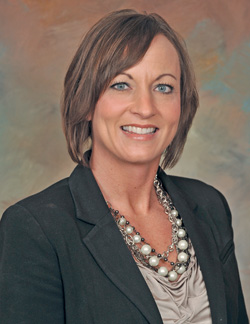No ACOs without coordination

For providers considering how to assemble a viable accountable care organization, experts say the key is to first have a strong care coordination system in place. Without cohesion and collaboration among clinicians, an ACO has no chance of getting off the ground, says John Shankman, senior vice president of clinical innovation for New York-based AMC Health.
“You can’t have an ACO without care coordination,” he said. “An ACO just means you’re accountable and doesn’t address the real issue.”
Care coordination is represented by health information exchanges, electronic medical records and interoperability, but they only serve as the tools, Shankman said. The issue is about who is responsible for the “pain point” of care coordination – managing patients with chronic disease.
“Coordinating and providing the visibility of chronic patients when they’re home must be combined for clinical decision support,” he said. “The problem is that all attention has been placed on structure – who serves as the locus and what to coordinate.”
[See also: A global model for care coordination.]
While technology is important in data management, patient monitoring and provider linkage, the focus on EMRs “is unfortunate because so much attention has been paid to it as a panacea for all the problems,” Shankman said. “But a gaping hole still exists – real-time information from the home or wherever the patient lives. No EMR in the world will tell you that information. EMRs tell what happened, but not what is happening.”
Ed Gaudet, general manager of Lexington, Mass.-based Imprivata Cortext Product Group, agrees that a cultural shift is needed to reach an optimum level of care coordination.
“It requires a cultural change on the same scale as from horse-and-buggies to automobiles,” he said. “Electronic medical records have been established for a few years, but now through that we need to look at workflows with communication and collaboration through the wireless technology people are using now.”
In the span of just a few years, care teams have gone from using outdated technologies like faxes and pagers to wireless technology with tablets and smartphones to communicate with each other. And while that proliferation has improved productivity, it also raises security concerns. What’s more, those archaic tools are still part of the workflow fabric.
[See also: Boston Children's maps new way of care.]
Imprivata is focused on solving both those issues, Gaudet said.
“The IT staff might see insecure texting, but when we talk to clinicians, there is a much larger problem around replacing the outdated forms of technology that are still being used for these workflows,” he said. “The goal is to reduce the standard set of steps and the time it takes to complete them. We help clients establish governance, understand workflows and care coordination so that best practices can be established. Most care team scenarios have protocols that can be codified in a way that can be placed in a template or checklist and used to eliminate inefficient steps of care.”
Protecting texts
Atlantic Health is active in two ACOs – one is hospital-focused while the other is physician-focused, consisting of primary care, hospital-based primary care providers and specialists. Organizers were “thoughtful of what is needed” for the successful collaboration among stakeholders, said CIO Linda Reed, particularly on financial incentives for “good citizenship.”
 The bring-your-own-device, or BYOD, security headache caused by ubiquitous mobile devices is no longer a problem at Atlantic, Reed said, because the health system has adopted Imprivata’s secure platform called Cortext. Even though the organization uses different modalities for IT access, the platform compensates and offers uniform security, she said.
The bring-your-own-device, or BYOD, security headache caused by ubiquitous mobile devices is no longer a problem at Atlantic, Reed said, because the health system has adopted Imprivata’s secure platform called Cortext. Even though the organization uses different modalities for IT access, the platform compensates and offers uniform security, she said.
“Every unit is different on which method might work best, so there is a mix and match – ER might use a biometric sign-on where tap-and-go might work better on the floor,” she said. “Texting has become ubiquitous because clinicians use whatever is most expeditious. So we worked with Imprivata to provide a complete secure platform.”
‘No playbook’
Orlando Health has been actively using population health management technology to integrate care among its 2,000 affiliated physicians, 500 employed physicians and inpatient providers across its enterprise. As the health system began acquiring physician practices in 2011, clinical nurse specialist Tawnya Adkisson, RN, said the health system needed “a level of organizational support it never had before…a mechanism for tracking health.”
Deploying Dallas-based Phytel’s population health solution in November 2012, Orlando Health soon landed a Medicare shared savings program with CMS and an ACO contract with Cigna.
“It allowed us to get our foot in the game,” Adkisson said. “We asked ourselves – can we do it, do we have the data and infrastructure to provide better care at a lower cost to patients? Where there’s a will there’s a way and we earned savings the first year.”
“Where there’s a will there’s a way and we earned savings the first year.”
- Tawnya Adkisson
Indeed, the Medicare shared savings totaled $3 million and the ACO program with Cigna saved $6 million. Another shared savings program with Florida Blue Cross/Blue Shield started in 2014 has the potential to save $2 million.
Adkisson’s role has focused on getting clinical support for the non-physician clinicians – nurses, dieticians, therapists and pharmacists – to get a team-based approach to care.
“There is no playbook for how to do this,” she said. “We had to figure out how to change the workflow in order to capture the measures we needed and we’re still changing our workflow three years later.”
























